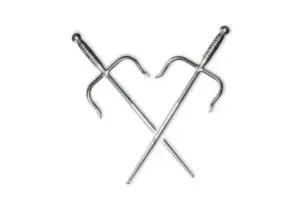Understanding Juros in Silat Martial Arts
Silat is a traditional martial art form that originated in Southeast Asia, particularly in the Malay Archipelago. It is known for its fluid movements, intricate techniques, and emphasis on self-defense. One of the fundamental concepts in Silat is the use of juros.
What are Juros?
Juros, also known as jurus or serak, are a series of prearranged movements or techniques in Silat. They are choreographed sequences that practitioners use to develop their skills, improve their coordination, and understand the principles of the art. Juros can be thought of as a combination of forms, drills, and patterns, which are practiced both solo and with a partner.
How are Juros Used?
Juros serve several purposes in Silat martial arts:
1. Skill Development:
By practicing juros, martial artists can develop and refine their techniques. Juros allow practitioners to focus on specific movements, such as strikes, blocks, and footwork, in a controlled and repetitive manner. This repetition helps to build muscle memory and improve overall proficiency.
2. Coordination and Timing:
Juros require practitioners to coordinate their movements with precision and timing. They help develop the ability to flow smoothly from one technique to another, enhancing agility and adaptability in combat situations. Through juros, practitioners learn to react quickly and effectively to different attacks and defend themselves.
3. Application and Adaptation:
Juros provide a platform for practitioners to understand the application of techniques in real-life scenarios. By practicing juros with a partner, martial artists can simulate combat situations and learn how to adapt their movements based on the opponent’s actions. This allows them to develop strategies and counterattacks that are practical and effective.
4. Mental Focus and Discipline:
Practicing juros requires concentration, focus, and discipline. The repetitive nature of juros helps practitioners develop mental resilience and the ability to stay calm under pressure. It also cultivates patience and perseverance, as mastering juros often takes time and dedication.
Types of Juros
There are various types of juros in Silat, each with its own unique characteristics and purposes. Some common types of juros include:
1. Juros Tunggal:
Juros Tunggal, or single juros, focus on a single technique or movement. They are often used to isolate and master specific techniques, such as strikes, kicks, or joint locks. Juros Tunggal are typically practiced individually to develop precision and control.
2. Juros Ganda:
Juros Ganda, or double juros, involve the combination of two techniques or movements. They aim to enhance coordination, timing, and fluidity between different techniques. Juros Ganda are practiced both solo and with a partner, allowing practitioners to develop their ability to transition smoothly between techniques.
3. Juros Berpasangan:
Juros Berpasangan, or paired juros, are practiced with a partner. They involve a series of coordinated movements between two practitioners, simulating a combat scenario. Juros Berpasangan focus on the application of techniques, adaptability, and the development of sparring skills.
4. Juros Lian:
Juros Lian, or flowing juros, emphasize continuous movements and fluidity. They involve a seamless transition between different techniques, creating a flowing and dynamic sequence. Juros Lian develop agility, footwork, and the ability to maintain control and balance while executing techniques.
Conclusion
Juros play a vital role in Silat martial arts, offering practitioners a structured and systematic approach to skill development, coordination, adaptability, and mental focus. By practicing juros, martial artists can enhance their techniques, improve their combat abilities, and deepen their understanding of this ancient martial art form.


